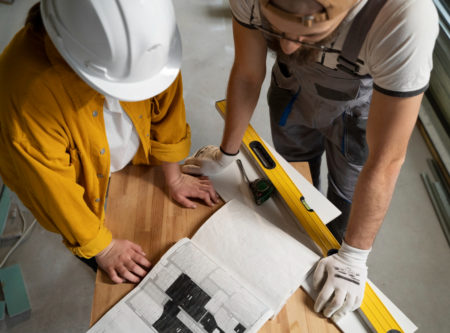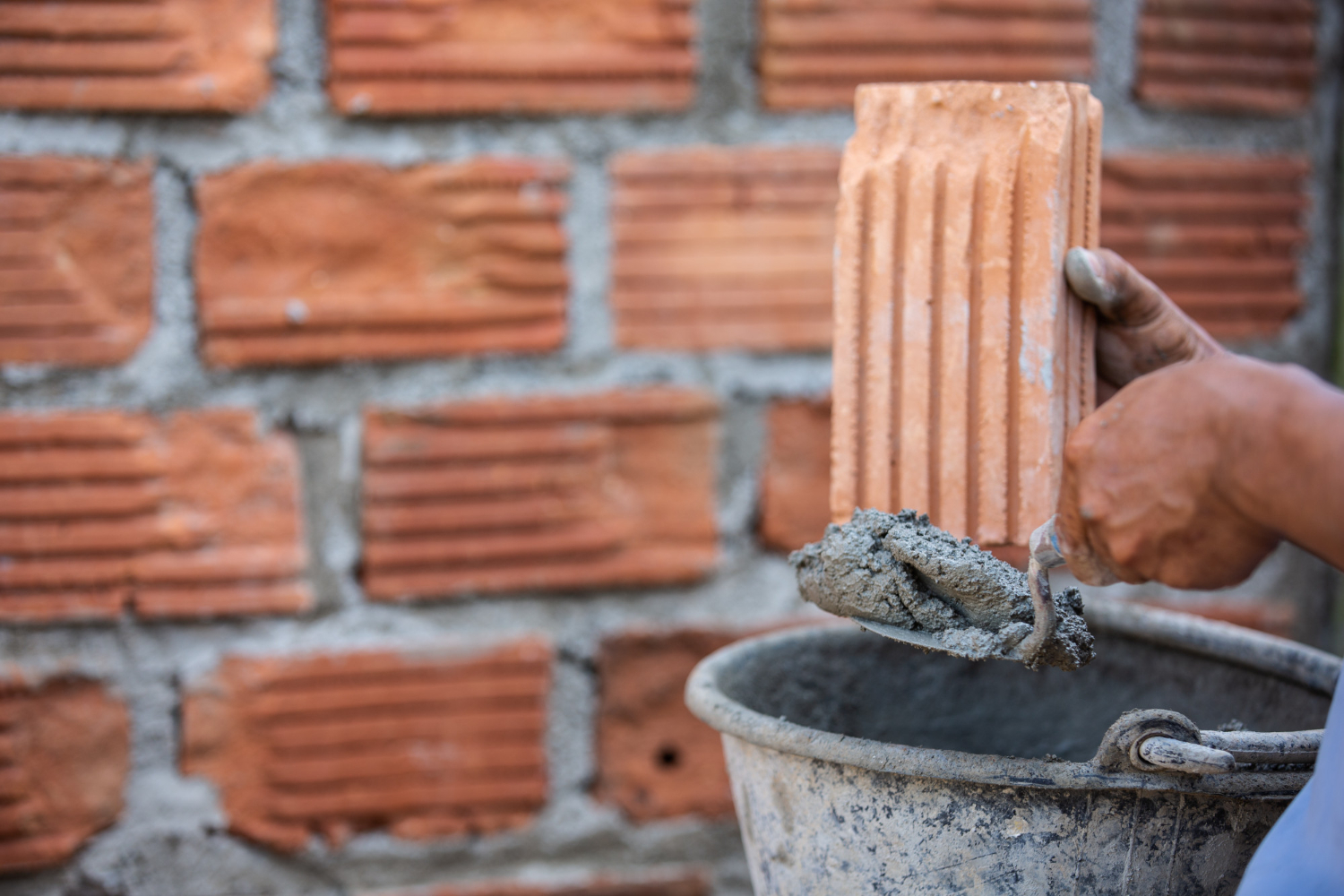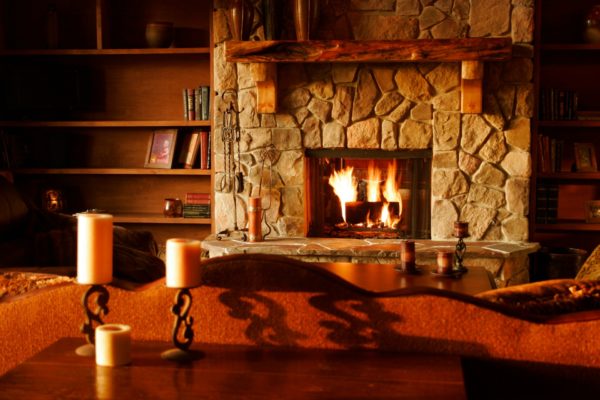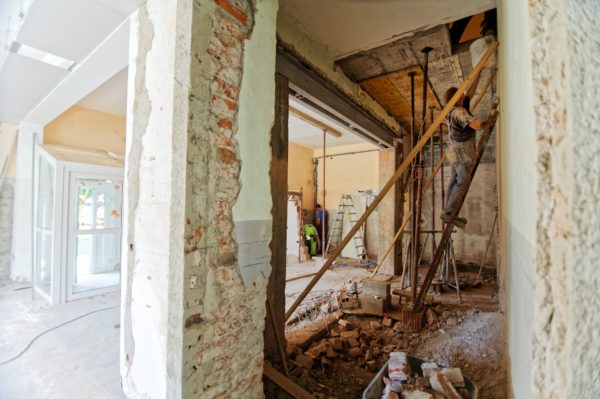The story between man and the “built” often begins as a thunderbolt, a compelling desire to own and invest a unique place registers in the history on whom the owner will leave the stamp mark of his way through. Discover our expert advice on choosing the right craftsmen and materials.
Then comes the question of rehabilitation or restoration of the site. The design choice for rehabilitation should take into account several parameters: the project of the owner and the specific characteristics of the building will drive the choice of professionals.
To restore according to the rule book imposes the master’s degree and the knowledge of the traditional materials and their techniques of implementation in adequacy with the support. Every rehabilitation has its own specificities, there are no universal takings, every gesture must be made with discernment, every taken decision has consequences on the future of the built. So that the led actions are not destructive of patrimonial and cultural value, the choice of craftsmen is essential and must be always motivated by the skill, the knowledge and the recognized know-how.
The respect for certain principles such, as the preliminary diagnosis and the choice of craftsmen having the knowledge of materials and their implementation, allows to insure the sustainability and the valuation of the architectural heritage.
1 – How to choose the right craftsmen ? Diagnosis is a prerequisite in any action
However built former it was medieval or industrial, deserves the examination of a professional to diagnose the disorders and analyze the constructive mode in regard of its historic and geographical context. This stage of preliminary diagnosis is essential in the process of reflection to the project of rehabilitation which will be determining for the sustainability and the valuation of the built. Know what and how to observe to deliver the best analysis and prescribe the good gesture.
The diagnosis of the built has to take into account his sanitary condition, its characteristics, its historic and geographical environment, its thermal mode and the causes of disorders to target risks assessments (structural, geological, climatic, of decay…).
The analysis of these specificities allows to establish a kind of photography of group highlighting the history and the observed pathologies leading recommendations of restoration or rehabilitation. It is the preliminary diagnosis which puts the foundations of the methodology, the methods and the techniques of intervention which craftsmen will have to respect.
Diagnosis of ancient monuments
In the field of the restoration of the old, it is always difficult to establish an estimate. Behind walls covered with cement, with plasterboards, we often find “surprises” which we cannot anticipate before the starting up of the intervention. Estimates are made then step by step with the agreement of the customer.
Every building has its own history and was built according to construction rules guided by the geologic and geographical location which takes into account a setting-up determining the choice of building materials.
The ancients knew how to build with common sense. Take the example of a house of 18th century situated in stone built Paris region and coated with a lime plaster. The recent fashion of visible stones prescribes to remove the former coating. Beyond the indisputable aesthetic bias, these houses planned to receive a coating are now with their skin ripped off, naked, exposed to bad weather, to construction disorders and premature damages.
The use of coating allows to protect construction. Still it is necessary to know the supporting for an adequate application with the good technical formula. Some stone or brick-built houses are not however designed to receive a coating, there also it is knowledge and observation who allow to analyze the stone and its bonding and determine if the stone was bonded to be seen or covered. The new owner accompanied or not of an architect specialized (or not) in the heritage restoration owes remain attentive to the choice of builders or craftsmen which will step in on his property.
2 – Craftsmen and materials
-
Identification of the competent craftsman.
Identification of the good craftsman is often an obstacle course, the owner then has to be escorted by an architect or by expert bodies, as trade associations, who can help him in his choices. The craftsman will be selected on his
-
Remarkable and authentic know-how
Only experience allows restoration or successful remodeling (rehabilitation). The knowledge of build former and the use of noble and traditional materials such as hard wood, lime natural, the raw and cooked soils, the stone of country, marble stones are security to harmonious restorations and in spirit of origin region . The control of techniques and materials allows perfecting of custom-made and exclusive materials to answer particular application of intervention on any works of restoration, renovation or decoration on even contemporary or old buildings.
Whether it is for the remodeling of your house, of your apartment, or simply the improvement of your home, while keeping the authentic aspect, intervention must be scrupulous and targeted and respects the state of the art. Hand’s intelligence makes distinguishing.
-
Materials in adequacy with their base
The choice of materials is fundamental for the success of a sustainable restoration and has to be on raw materials which have proved their sustainability and their stability in time. Implementation stage is essential and must be given to specialized craftsmen.
The misuse of materials can make irreversible damage. For example, the massive use of cement and other inappropriate coatings which covered our facades and our inside leads to decay by humidity rising and smothering of wood and masonries, so destroying our architectural heritage. The basic principle to be respected is to choose materials according to their base covered with a breathing coating. Warned craftsman will choose primarily proximity materials as guaranty of authenticity, then materials riskless for inhabitants and environment.
-
Answer to the requirements of a modern world by the eco-construction
Today, 25 % of greenhouse gas emissions and half of the energy consumption in France are generated by building sector. This sector, although strongly consumer, presents the advantage to possess a real potential for energy saving. This is obvious for the new constructions but also for renovations. The know-how and the knowledge of the constructive modes used by ancients allow bringing new solutions to the questions of comfort essential to our current life. Sound and thermal insulation, quality ecological materials … and this with respect of existing state.
Appropriate ecological strategies need to be developed and suitable for contemporary needs for comfort and energy savings. By following the regulations and preservation of buildings’ balance and identity, by the use of materials stemmed from vegetable life, mineral world or from recycled products. For example materials such hemp, cork, the linen, wood, soil, the lime, the lawn, the cotton, the paper which we can find under forms so diverse as wool, bulk or in panels
These materials associate modernity and tradition, some examples:
– Traditional coatings to isolate facades, walls and grounds, restrict houses energy consumption (lime, clay …);
– Ecological insulations for attics (wool of hemp, sheep, cotton, cellulose padding, wood, cork) are used also for outside insulation.
– Recycled materials offer a better insulation and soundproofing than materials usually used, as the glass wool;
– Raw clays were used in cob, adobe or bricks and are a traditional ecological insulating;
– Terra-cottas combine aesthetic and insulation
All these techniques exist for a long time; the craftsman can guarantee them from his own experience.
The restoration of old buildings with traditional and ecological techniques and materials has a positive environmental balance. These materials have impacts on health clearly less important than those used usually in the construction. Full construction diagnosis, craftsmen’ skills renowned and the implementation of materials that are traditional or innovative are the three columns of a successful restoration.


